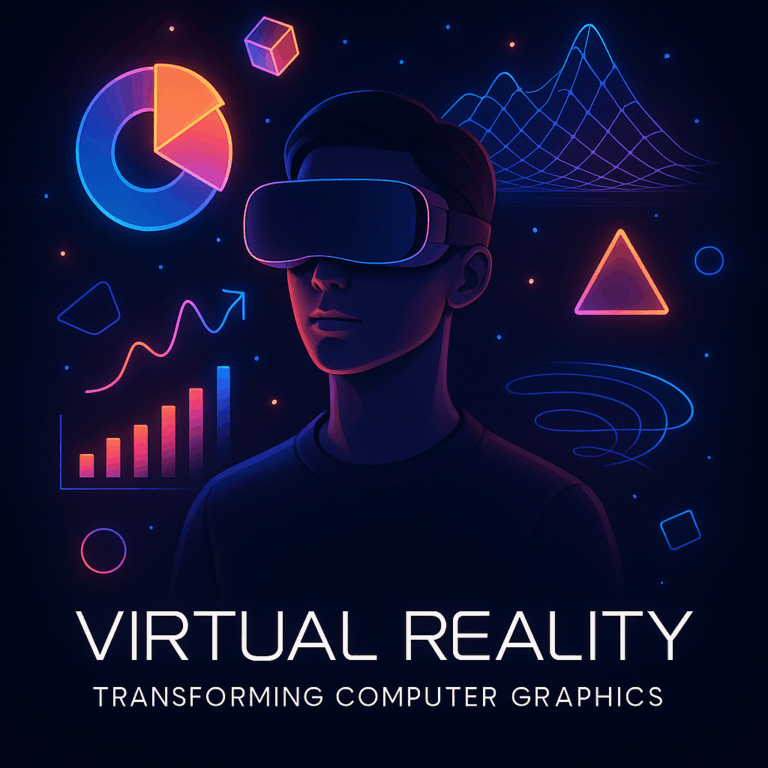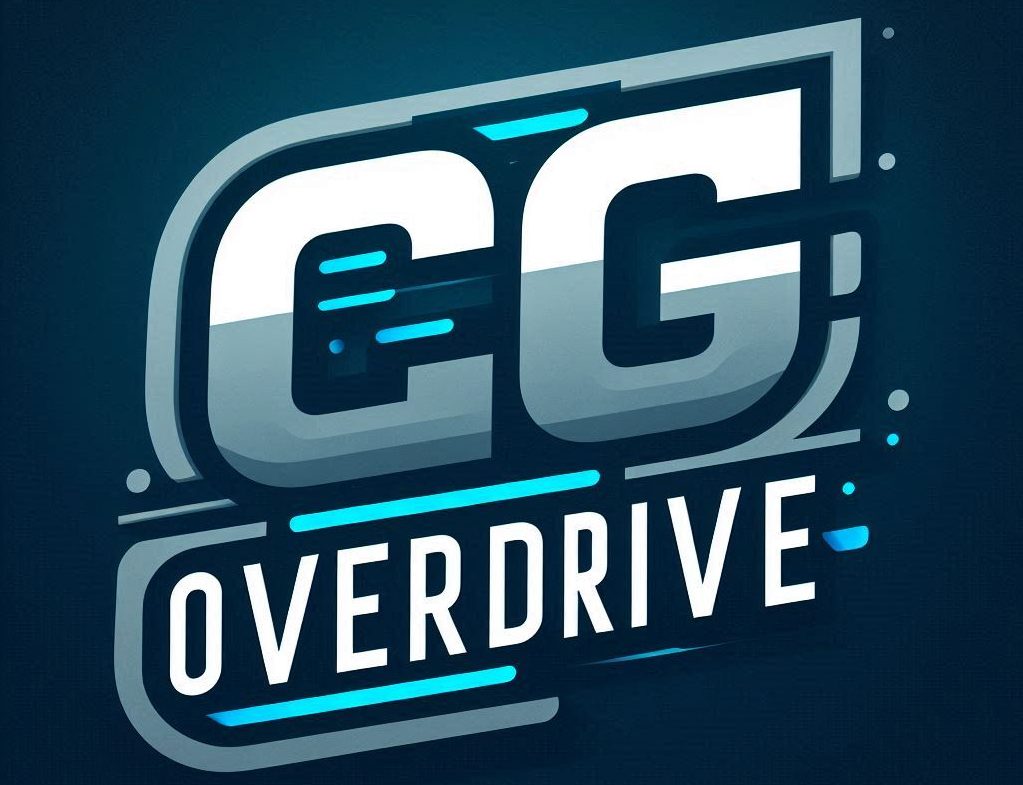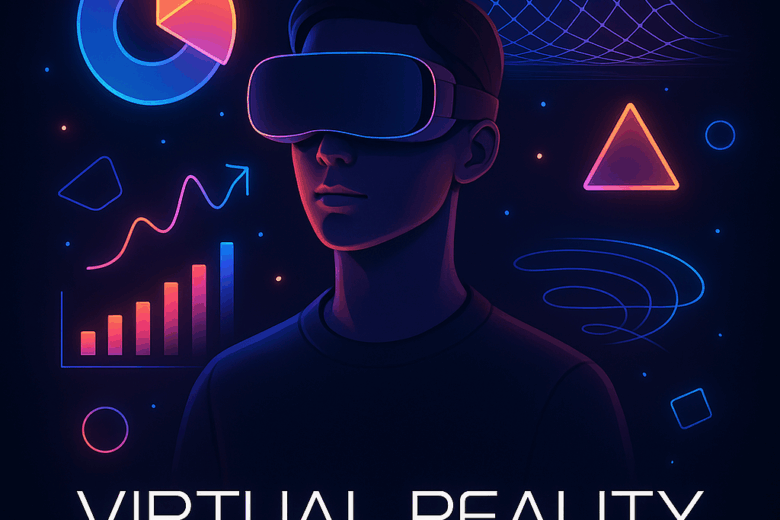Revolutionizing Immersion: The Impact of Virtual Reality on the Computer Graphics Industry
Virtual Reality (VR) stands at the crossroads of technology and storytelling, transforming the landscape of the computer graphics (CG) industry. More than a fleeting trend, VR represents a profound shift in how we experience digital worlds—melding high-fidelity computer graphics with interactive environments to create fully immersive experiences. To thrive in this evolving medium, creators and developers must grasp VR’s unique demands on CG pipelines, artistic design, and user interaction. This article dives deep into the intersection of VR and computer graphics, offering expert insights and actionable advice for pushing boundaries and unlocking VR’s untapped potential.

Understanding the Unique Demands of VR in Computer Graphics
The leap from traditional 2D screens to VR head-mounted displays introduces a fundamental shift in CG rendering and design principles. Standard computer graphics often focus on single perspectives and fixed viewpoints, but VR demands full 360-degree environments rendered in stereoscopic 3D. This requirement drives a new set of challenges:
– **Performance Optimization:** VR experiences must maintain a minimum of 90 frames per second (fps) to avoid motion sickness and maintain immersion. This strict threshold forces intense optimization of polygon counts, shader complexity, and texture resolutions.
– **Latency Reduction:** Minimizing the delay between user input and visual response is crucial. Rendering pipelines must be streamlined and often paired with predictive tracking algorithms to achieve sub-20ms latency.
– **Real-Time Lighting and Shadows:** Unlike pre-rendered VFX, VR environments require dynamic lighting systems that react instantly to user movement and environmental changes without compromising performance.
– **Field of View and Depth Perception:** CG assets must be modeled and textured considering the wide field of view and depth cues to avoid visual discomfort and maintain believability.
Understanding and mastering these factors helps VR creators to engineer environments that feel natural, comfortable, and immersive.
Building Blocks of Effective VR Computer Graphics
The cornerstone of AR/VR success lies in creating CG content that feels alive without overwhelming hardware constraints. Below is a structured framework outlining key considerations:
| Element | VR-Specific Requirement | Expert Tip |
|————————-|——————————————————|——————————————–|
| Geometry | Low to moderate polygon count with LOD (Level of Detail) systems | Use mesh decimation and LOD switchers dynamically based on viewer distance to balance quality and speed |
| Shaders and Materials | Lightweight, physically based rendering (PBR) | Optimize shaders with baked lighting where possible; utilize simplified BRDF models for real-time rendering |
| Textures | High-quality but compressed and mip-mapped | Leverage texture streaming and atlas textures to reduce draw calls and improve performance |
| Lighting | Real-time dynamic lighting; importance on global illumination approximation | Employ hybrid lighting techniques blending baked GI with real-time lights |
| Post-Processing | Minimalistic usage to avoid frame drops | Use VR-friendly effects like subtle tone mapping and eye adaptation, avoid heavy motion blur |
| Animation and Interaction| Smooth, natural animations synced to user input | Combine inverse kinematics and motion prediction for accurate avatar animation |
By applying this framework, VR artists and developers can strike a critical balance between visual fidelity and smooth performance—a linchpin of effective immersion.
Practical Advice for Creating Immersive VR Experiences with Computer Graphics
Mastering VR’s challenges requires a fusion of technical rigor and artistic vision. Here are actionable strategies to elevate your VR CG projects:
• **Optimize for the Human Eye:** Understand how the human eye perceives depth and focus. Design CG elements to fall within comfortable viewing distances. Avoid placing complex textures or fine details too close to the camera, which can cause visual strain.
• **Craft Environmental Storytelling:** VR thrives on presence and exploration. Use computer graphics not just for realism but as a narrative device. Dynamic props, subtle lighting shifts, and environmental sounds enhance the feeling that users “live” within the world.
• **Modular Asset Design for Flexibility:** Develop reusable CG assets and modular environments. This approach reduces development time and computational overhead, allowing rapid iterations and improvements.
• **Use Advanced Simulation for Realism:** Integrate physics-based simulations for fluid movement, cloth, particles, and soft-body dynamics to breathe life into VR worlds, making interactions believable.
• **Prioritize User Comfort:** Employ spatial audio, adjustable user height, and locomotion comfort settings. Design CG elements to prevent visual overload or disorientation, critical for longer VR sessions.
• **Leverage Machine Learning:** Emerging AI-driven tools can automate texture synthesis, generate realistic animations, or enhance upscaling in real-time, reducing manual workload while maintaining quality.
Case Studies: VR Innovations Pushing Computer Graphics Boundaries
Several groundbreaking VR projects showcase the power of advanced computer graphics in shaping extraordinary experiences:
**Half-Life: Alyx**: Valve’s flagship VR title redefined interactive storytelling by combining photorealistic computer graphics with meticulously optimized VR rendering. Dynamic light probes and physically based shaders created realistic environments without compromising frame rate. Its success proved that CG-heavy VR games could be both technically impressive and narratively rich.
**The VOID**: This mixed reality experience uses cutting-edge CG and physical environments blended with haptic feedback and scent to deepen immersion. Its CG pipeline focuses on ultra-low latency rendering synchronized with precise external tracking—an excellent example of real-world VR system integration.
**Tilt Brush**: By throwing traditional polygon-heavy CG out the window, Google’s VR drawing app leveraged volumetric and volumetric particle graphics, allowing artists to sculpt 3D brush strokes in VR space. It highlights how VR inspires new forms of CG expression beyond photorealism.
Future Trends and Opportunities in VR Computer Graphics
The evolution of VR hardware and software continues to open new possibilities for the CG industry:
– **Foveated Rendering:** By tracking eye movements, VR systems render only the region of gaze in full detail, significantly reducing load and enabling richer visuals.
– **Real-Time Ray Tracing:** Emerging GPU architectures support ray tracing in VR, improving global illumination, reflections, and shadowing with unprecedented realism.
– **Cloud Rendering:** Offloading complex CG computations to cloud servers will democratize access to high-fidelity VR, reducing hardware barriers.
– **AI-Enhanced Content Creation:** Machine learning models trained on vast CG datasets will generate high-quality textures, materials, and animations, accelerating development pipelines.
These trends will further blur the line between virtual and reality, expanding storytelling horizons and technical benchmarks.
Empowering Creators: Tools and Resources for Excellence in VR Computer Graphics
Embarking on VR CG development requires the right toolkit. Recommended platforms and engines empower creators to push boundaries:
| Tool/Engine | Strengths | Useful Resources |
|———————–|———————————————–|———————————————-|
| **Unreal Engine** | Photorealistic graphics, powerful VR support | Unreal VR Tutorials, official docs |
| **Unity3D** | Flexible, extensive VR plugins | Unity Learn, XR Interaction Toolkit |
| **Blender** | Open-source 3D modeling and animation | Blender VR add-ons, community forums |
| **Substance3D Suite** | Advanced texturing and material authoring | Adobe tutorials, procedural material libraries|
| **NVIDIA Omniverse** | Real-time collaboration and ray tracing | Omniverse developer zone, SDK documentation |
| **OpenXR** | Cross-platform VR API standard | Khronos Group specs, sample implementations |
Investing time in mastering these tools accelerates your path to mastering VR computer graphics artistry and technical finesse.
Taking the Leap: A Call to Innovate with VR and Computer Graphics
Virtual Reality has solidified itself as a transformative force in the computer graphics industry, challenging the conventions of visual fidelity and storytelling. Its demands push creators to innovate on both hardware and software fronts, crafting immersive worlds that untether imagination from traditional screens. Whether you’re a CG artist, developer, or visionary, embracing VR’s unique possibilities unlocks new dimensions of creativity—where your digital landscapes don’t just depict reality but place users inside it.
Push past technical hurdles with smart optimization, leverage emerging AI and rendering advancements, and design with the user’s comfort at heart. In doing so, you’ll not only craft compelling VR experiences but also contribute to shaping the future of computer graphics itself—a future where the line between the virtual and the real becomes exhilaratingly blurred.

